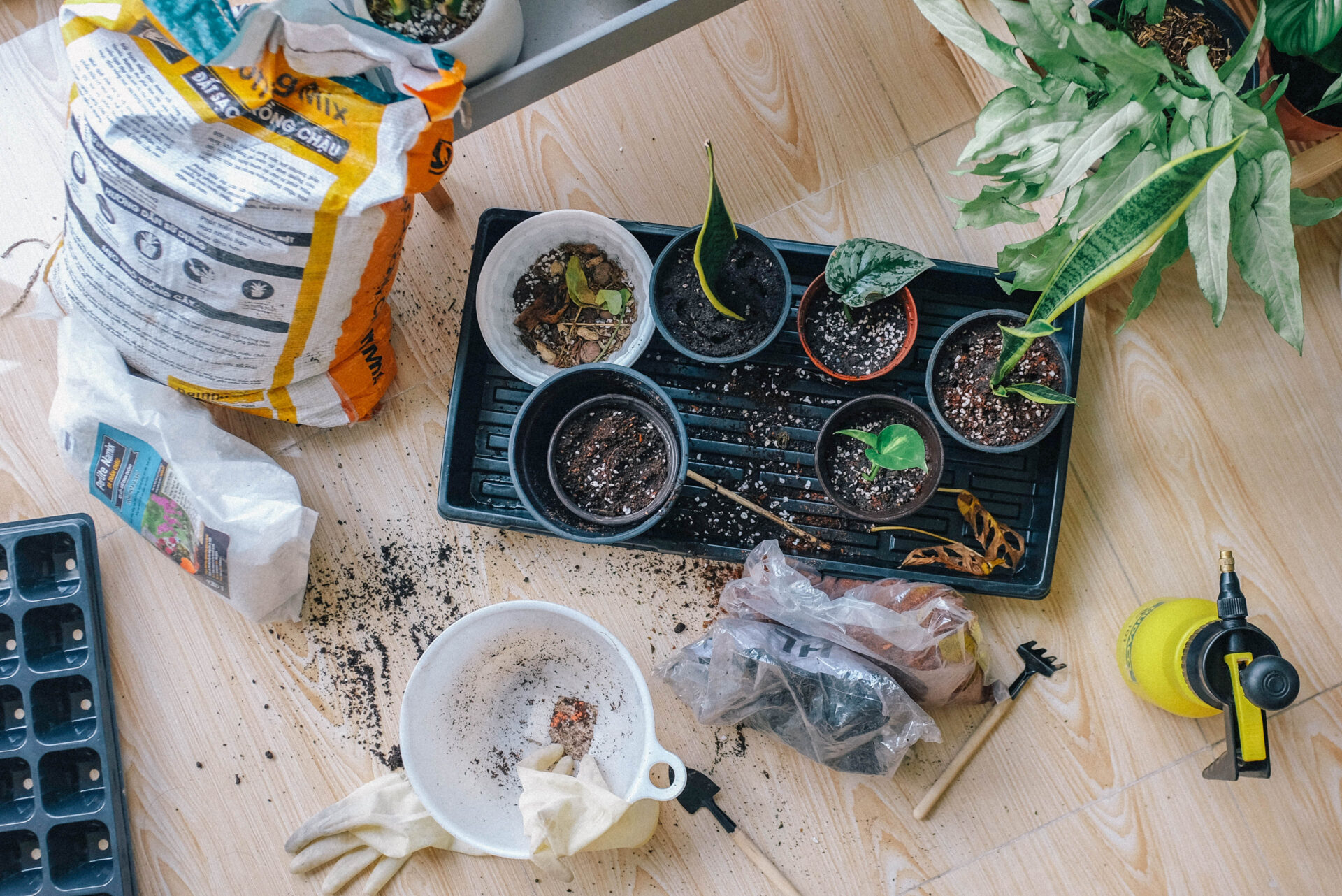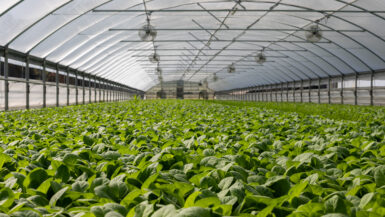As urbanization continues to expand and the demand for fresh produce grows, innovative solutions are needed to maximize the limited spaces available for gardening. One such solution is indoor vertical gardening, a cutting-edge concept that combines design, technology, and sustainability to create thriving garden ecosystems within urban environments.
This article will delve into the latest innovative indoor vertical garden systems and technologies that have emerged as frontrunners in this growing trend. We will explore the fundamentals of these systems, their advantages, and how they transform how we grow and consume fresh produce, all while preserving precious resources and promoting a healthier lifestyle.
Join us as we uncover the intricacies of these groundbreaking technologies and learn how they are revolutionizing the future of urban agriculture.
Space-Saving Wall-Mounted Vertical Gardens
As cities become more densely populated, finding space for traditional gardens can be challenging. Wall-mounted vertical gardens offer a viable solution to this problem by transforming unused vertical surfaces into lush green spaces. These innovative indoor vertical garden systems save space, add aesthetic appeal, and improve air quality. This section will discuss various wall-mounted vertical gardens, their benefits, and some tips on growing edible plants in your indoor vertical garden.
Types of Wall-Mounted Vertical Garden Systems
Several wall-mounted innovative indoor vertical garden systems are available in the market, each with unique features and advantages. Some popular options include:
1. Modular systems: These systems consist of individual planting modules that can be easily attached to a wall. They offer flexibility in design, allowing you to create custom patterns and shapes based on your preferences.
2. Felt pocket systems: Made from breathable fabric, these systems feature multiple pockets for planting. They are lightweight, easy to install, and provide excellent aeration and drainage for plant roots.
3. Hydroponic systems: These soilless garden systems grow plants using nutrient-rich water solutions, eliminating the need for soil. They are highly efficient, produce faster growth rates, and require less maintenance than traditional gardens.
Benefits of Wall-Mounted Vertical Gardens
In addition to saving space, wall-mounted vertical gardens offer a myriad of other benefits, such as:
1. Improved air quality: Plants in vertical gardens act as natural air purifiers, absorbing pollutants and releasing oxygen, leading to healthier indoor environments.
2. Enhanced aesthetics: These gardens can transform bland walls into vibrant, living works of art, making them an attractive addition to any interior design.
3. Noise reduction: The plants and growing medium in wall-mounted gardens can help absorb and dampen noise, creating a quieter and more peaceful living space.
4. Energy savings: Vertical gardens can help insulate buildings, reducing the need for heating and cooling systems and ultimately leading to lower energy costs.
Tips for Growing Edible Plants in Wall-Mounted Vertical Gardens
Growing edible plants in your indoor vertical garden is a space-saving solution and a great way to ensure a constant supply of fresh, organic produce. Here are some tips to help you succeed in cultivating your edible vertical garden:
1. Select suitable plants: Opt for plants with shallow root systems that can thrive vertically, such as herbs, leafy greens, and small fruiting plants.
2. Ensure proper lighting: Ensure your garden receives adequate sunlight or invest in artificial grow lights to provide the necessary light for plant growth.
3. Choose the right growing medium: Select a lightweight, well-draining medium that retains moisture and supports your plants.
4. Monitor water and nutrient levels: Regularly check your garden’s water and nutrient levels to ensure optimal plant health and growth.
By embracing wall-mounted vertical garden systems, urban dwellers can enjoy the benefits of gardening even in the tightest spaces. With their space-saving design and numerous advantages, these innovative systems pave the way for greener, healthier, and more sustainable urban living.
Eco-friendly Indoor Living Walls
Indoor living walls are innovative indoor vertical gardens designed to integrate seamlessly into interior spaces, adding a touch of nature while promoting a cleaner, more sustainable environment. These self-sufficient ecosystems harness natural processes to purify the air, regulate humidity, and enhance well-being. In this subsection, we will explore the environmental benefits of indoor living walls and explore innovative technologies that make their maintenance effortless and efficient.
Environmental Benefits of Indoor Living Walls
Indoor living walls are visually appealing and contribute to a healthier, more sustainable environment. Some of the key environmental benefits include:
1. Air purification: Plants in living walls act as natural air filters, removing harmful toxins and pollutants and releasing fresh oxygen into the surrounding space.
2. Temperature regulation: The plant life and growing medium in living walls provide insulation, helping to moderate indoor temperatures and reduce energy consumption for heating and cooling.
3. Humidity control: Living walls help to maintain a comfortable humidity level indoors by absorbing excess moisture and releasing it through transpiration.
4. Biodiversity promotion: Indoor living walls can support various plant species, encouraging biodiversity and providing a sanctuary for beneficial insects and microorganisms.
Innovative indoor Vertical Graden Technologies for Effortless Maintenance
Maintaining a thriving indoor living wall requires a precise balance of light, water, and nutrients. Thankfully, cutting-edge technologies have emerged to simplify these tasks, ensuring your living wall remains healthy and vibrant with minimal effort. Some of these innovative technologies include:
1. Automated irrigation systems: These systems provide a consistent water supply and nutrients to the plants’ roots, eliminating manual watering and ensuring optimal growth conditions.
2. Energy-efficient LED grow lights: Supplementing natural light with energy-efficient LED grow lights can provide the ideal light spectrum for plant growth, promoting lush foliage and vibrant colors.
3. Smart sensors and monitoring: Advanced sensors can track various environmental parameters, such as temperature, humidity, and light levels, allowing you to make informed decisions about your living wall’s care and adjust conditions as needed.
4. Modular design: Many indoor living walls are modular, allowing for easy installation, expansion, and customization to suit your unique space and preferences.
Indoor living walls have emerged as a sustainable and eco-friendly solution to urban gardening, transforming interior spaces into lush, green oases. By embracing these innovative technologies and understanding their environmental benefits, you can create a thriving indoor garden that contributes to a healthier, more sustainable lifestyle.
Automated Vertical Garden Kits for Easy Maintenance
In indoor vertical gardening, convenience and efficiency are key factors for success. Automated vertical garden kits have become popular for urban gardeners seeking a low-maintenance, high-yield solution for growing fresh produce in limited spaces.
These all-in-one systems integrate advanced technologies to streamline the gardening process, ensuring your plants receive optimal care with minimal effort. In this subsection, we will explore the features and benefits of automated vertical garden kits and some available options to help you select the ideal system for your needs.
Features and Benefits of Automated Vertical Garden Kits
Automated vertical garden kits are designed with the busy urban gardener in mind, offering a range of features that simplify maintenance and promote healthy, thriving plants. Some of the key features and benefits include:
1. Integrated watering systems: These kits have built-in irrigation systems that deliver water and nutrients directly to the plant’s roots, ensuring proper hydration and nourishment without manual intervention.
2. Smart lighting solutions: Many automated vertical garden kits feature energy-efficient LED grow lights that can be adjusted to provide the ideal light spectrum for various plant species, promoting optimal growth and development.
3. Modular design: These systems’ modular nature allows easy installation, expansion, and customization to suit your specific space and gardening preferences.
4. Self-monitoring capabilities: Advanced sensors and monitoring tools can track environmental conditions, such as temperature, humidity, and light levels, and adjust settings accordingly to maintain optimal growing conditions.
Popular Automated Vertical Garden Kits in the Market
With various automated vertical garden kits available in the market, choosing a system that aligns with your specific needs and preferences is essential. Here are some popular options to consider:
1. The Nutritower: This hydroponic vertical garden system features a rotating base and energy-efficient LED lighting, allowing for even light distribution and easy access to your plants. The automated watering system ensures plants receive the proper nutrients and hydration for optimal growth.
2. Click & Grow Smart Garden: This compact vertical garden kit uses a soilless growing medium and automated watering system to ensure your plants receive the perfect balance of water and nutrients. The energy-efficient LED grow lights can be adjusted to provide the ideal light spectrum for various plant species.
3. Aerospring Indoor Garden: This aeroponic vertical garden system utilizes a soilless growing medium and misting technology to deliver water and nutrients directly to your plants’ roots. Its customizable LED grow light system and easy-to-assemble design make indoor vertical gardening a breeze.
By embracing automated vertical garden kits, urban gardeners can enjoy the benefits of indoor vertical gardening without the hassle of constant maintenance. These innovative indoor vertical garden systems simplify the gardening process, allowing you to focus on enjoying your labor’s fruits (and vegetables). As a result, you can cultivate a thriving indoor garden that provides fresh, organic produce and contributes to a healthier and more sustainable lifestyle.
Stackable Planters for Customizable Green Spaces
For those searching for adaptable and space-efficient innovative indoor vertical garden systems, stackable planters offer a customizable and scalable approach to creating lush green spaces within the confines of your home. These versatile planting systems come in various materials, sizes, and designs, allowing you to tailor your indoor garden to your unique preferences and available space. In this subsection, we will delve into stackable planters’ key features and advantages and offer some tips for optimizing their use in your indoor garden.
Key Features and Advantages of Stackable Planters
Stackable planters are designed to maximize space and adaptability, providing an ideal solution for urban gardeners with limited room or those seeking a flexible gardening system. Some of the main features and advantages of these planters include:
1. Space efficiency: By stacking planters vertically, you can optimize your available space and make the most of your indoor gardening area.
2. Customizable design: Stackable planters come in various materials, such as plastic, terracotta, or fabric, and sizes and shapes that can be easily mixed and matched to fit your style and needs.
3. Scalability: As your indoor garden grows, you can add more planters to your existing stack, adjusting the height and configuration to accommodate your expanding collection of plants.
4. Portability: Many stackable planters are lightweight and easy to move, allowing for convenient adjustments and rearrangements.
5. Improved drainage: Stackable planters typically feature built-in drainage systems, which efficiently remove excess water, prevent root rot, and promote healthy plant growth.
Tips for Optimizing Stackable Planters in Your Indoor Garden
To make the most of your stackable planters and create a thriving indoor vertical garden, consider the following tips:
1. Choose the right plants: When selecting plants for your stackable planters, consider their growth habits and root systems. Opt for plants with compatible growth rates, light requirements, and water needs.
2. Ensure adequate light: Ensure that each tier of your stacked planters receives sufficient light through natural sunlight or supplemental grow lights. Be mindful of plant placement, avoid overcrowding, and allow for even light distribution.
3. Prioritize proper drainage: Ensure your stackable planters have efficient drainage systems to prevent waterlogging and root rot. Place a tray or saucer beneath the bottom planter to catch excess water and protect your floors.
4. Rotate your planters: Rotate your stackable planters periodically to ensure even growth and light exposure for all plants. This practice promotes balanced growth and helps maintain your indoor garden’s health and appearance.
5. Monitor water and nutrient levels: Regularly check your planters’ moisture and nutrient content to ensure optimal plant health. Use a moisture meter or your fingers to gauge the soil’s moisture level, and adjust your watering schedule accordingly.
Stackable planters provide a versatile and customizable solution for indoor vertical gardening enthusiasts seeking to maximize their available space while enjoying the benefits of a vibrant, green environment. By understanding the key features and advantages of these planting systems and implementing the tips provided, you can create a flourishing indoor garden that caters to your unique preferences and enhances the overall quality of your living space.
Hydroponic Systems for Indoor Gardening
Indoor hydroponic systems have emerged as a popular and efficient method for cultivating plants in vertical gardens without using soil. These innovative systems utilize nutrient-rich water solutions to deliver essential nutrients directly to the roots, promoting faster growth and higher yields.
This subsection will discuss the various hydroponic systems available for indoor vertical gardening, their benefits, and tips for selecting and maintaining the right hydroponic system for your needs.
Types of Indoor Hydroponic Systems
Several hydroponic systems are suitable for innovative indoor vertical garden systems, each with unique characteristics and advantages. Some popular options include:
1. Nutrient Film Technique (NFT): This system involves a continuous flow of nutrient-rich water over the roots of plants, which are supported by sloping channels. It is ideal for plants with shallow root systems, such as leafy greens and herbs.
2. Aeroponics: This method suspends plant roots in the air and provides nutrients through a fine mist of nutrient-rich water. Aeroponic systems are highly efficient, allowing maximum oxygen absorption and rapid nutrient uptake.
3. Drip systems: In these systems, nutrient-rich water is delivered to the plant’s roots via a series of drip emitters. Drip systems provide precise water and nutrient delivery control, making them suitable for various plant species.
4. Ebb and Flow systems: Also known as flood and drain systems, these setups periodically flood the plant roots with a nutrient solution before draining them away. Ebb and Flow systems are versatile and can accommodate various plant types and sizes.
Benefits of Hydroponic Systems for Indoor Vertical Gardening
Indoor hydroponic systems offer several advantages over traditional soil-based gardening, making them an appealing option for urban gardeners. Some of the key benefits include:
1. Faster growth and higher yields: Hydroponic systems provide plants with a constant supply of nutrients, allowing for faster growth and higher yields than soil-based gardening.
2. Water conservation: Hydroponic systems recirculate water, using up to 90% less water than traditional methods, making them a more sustainable option for urban agriculture.
3. Space efficiency: By utilizing vertical space, hydroponic systems can significantly increase the number of plants grown in a given area, making them ideal for small or limited spaces.
4. Reduced pests and diseases: Hydroponic systems’ soilless nature reduces the risk of soil-borne pests and diseases, leading to healthier plants and a more manageable garden environment.
Tips for Selecting and Maintaining an Indoor Hydroponic System
Choosing the right hydroponic system and maintaining it properly is crucial to the success of your indoor vertical garden. Here are some tips to help you make an informed decision and ensure the health and productivity of your plants:
1. Assess your space and needs: When selecting a hydroponic system, consider the available space, plant requirements, and gardening goals. Each system has unique features and limitations, so choose one that aligns with your needs.
2. Monitor water quality: Regularly test the nutrient solution’s pH and nutrient levels to ensure optimal plant health. Adjust the nutrient concentration and pH based on your plant’s specific requirements.
3. Maintain proper sanitation: Keep your hydroponic system clean and debris-free to prevent harmful bacteria and algae buildup. Regularly clean and sterilize the system components to ensure the health and longevity of your plants.
4. Provide adequate lighting: Ensure your plants receive sufficient light through natural sunlight or supplemental grow lights. The appropriate light spectrum and intensity are vital for thriving plant growth and development in an indoor hydroponic system.
By understanding the various indoor hydroponic systems and their benefits and following the tips for selecting and maintaining the right system for your needs, you can enjoy a thriving indoor vertical garden that offers impressive growth rates, higher yields, and a more sustainable approach to urban agriculture.







Leave a reply